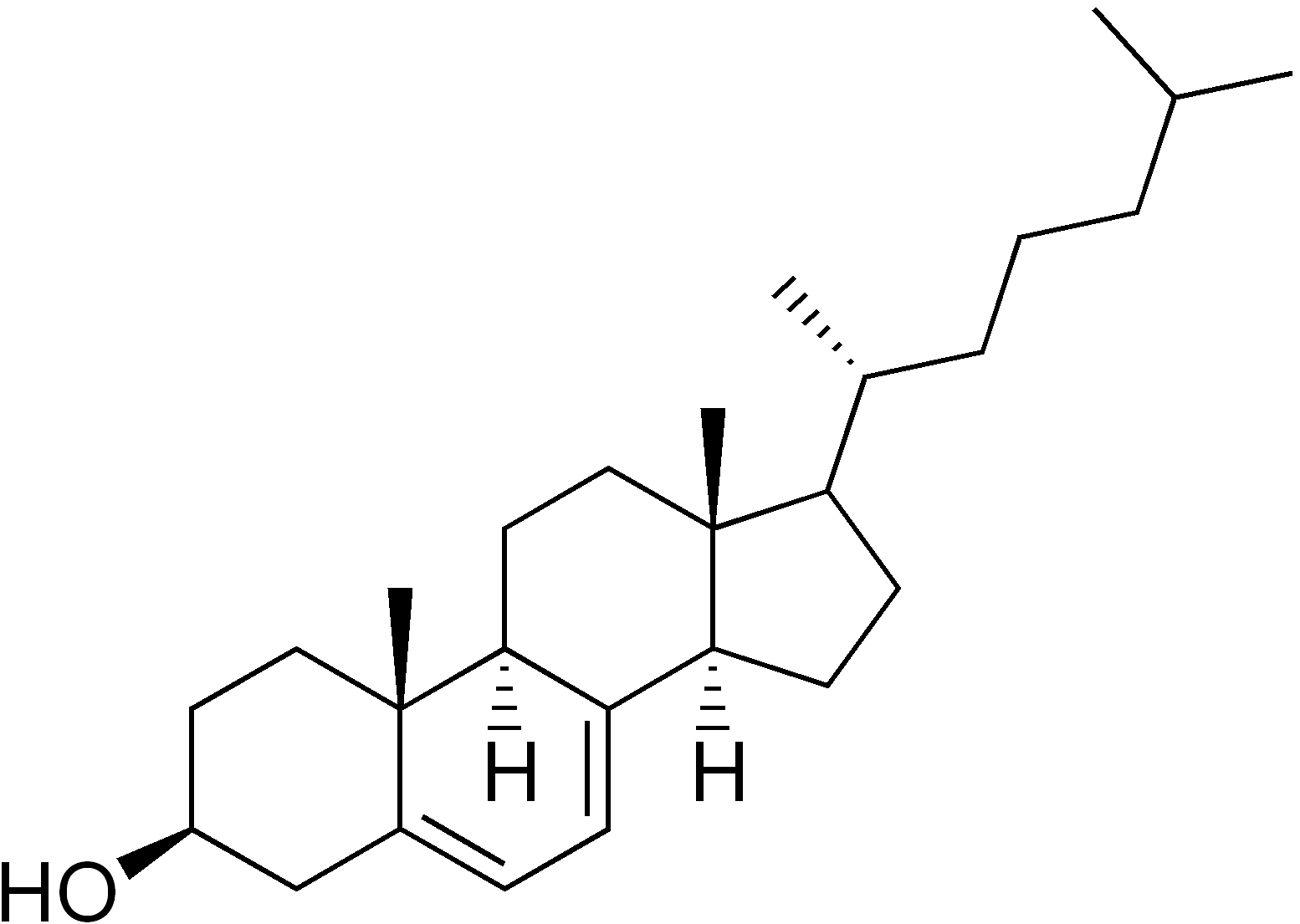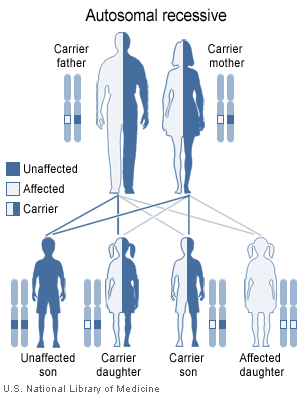Smith-Lemli-Opitz syndrome: Difference between revisions
No edit summary |
|||
| Line 66: | Line 66: | ||
Smith-Lemli-Opitz syndrome is caused by [[mutation]]s in gene [[DHCR7]] which codes for [[7-dehydrocholesterol]] enzyme. [[DHCR7]] gene has been localised to [[chromosome]] 11q23.<ref name="pmid9465114">{{cite journal| author=Moebius FF, Fitzky BU, Lee JN, Paik YK, Glossmann H| title=Molecular cloning and expression of the human delta7-sterol reductase. | journal=Proc Natl Acad Sci U S A | year= 1998 | volume= 95 | issue= 4 | pages= 1899-902 | pmid=9465114 | doi= | pmc=PMC19210 | url=http://www.ncbi.nlm.nih.gov/entrez/eutils/elink.fcgi?dbfrom=pubmed&tool=sumsearch.org/cite&retmode=ref&cmd=prlinks&id=9465114 }} </ref> | Smith-Lemli-Opitz syndrome is caused by [[mutation]]s in gene [[DHCR7]] which codes for [[7-dehydrocholesterol]] enzyme. [[DHCR7]] gene has been localised to [[chromosome]] 11q23.<ref name="pmid9465114">{{cite journal| author=Moebius FF, Fitzky BU, Lee JN, Paik YK, Glossmann H| title=Molecular cloning and expression of the human delta7-sterol reductase. | journal=Proc Natl Acad Sci U S A | year= 1998 | volume= 95 | issue= 4 | pages= 1899-902 | pmid=9465114 | doi= | pmc=PMC19210 | url=http://www.ncbi.nlm.nih.gov/entrez/eutils/elink.fcgi?dbfrom=pubmed&tool=sumsearch.org/cite&retmode=ref&cmd=prlinks&id=9465114 }} </ref> | ||
Mutations in the ''DHCR7'' gene reduce or eliminate the activity of [[7-dehydrocholesterol]] reductase, preventing cells from producing enough cholesterol. A lack of this enzyme also allows potentially toxic byproducts of cholesterol production to build up in the blood and other tissues. The combination of low cholesterol levels and an accumulation of other substances likely disrupts the growth and development of many body systems. It is not known, however, how this disturbance in cholesterol production leads to the specific features of Smith-Lemli-Opitz syndrome. | Mutations in the ''DHCR7'' gene reduce or eliminate the activity of [[7-dehydrocholesterol]] reductase, preventing cells from producing enough cholesterol. A lack of this enzyme also allows potentially toxic byproducts of cholesterol production to build up in the blood and other tissues. The combination of low cholesterol levels and an accumulation of other substances likely disrupts the growth and development of many body systems. It is not known, however, how this disturbance in cholesterol production leads to the specific features of Smith-Lemli-Opitz syndrome. | ||
==Pathology== | |||
This enzyme is responsible for the final step in the production of [[cholesterol]]. Cholesterol is an essential for normal [[embryogenesis|embryonic]] development. Cholesterol is also a structural component of [[cell membrane]]s and the protective substance covering [[nerve cell]]s ([[myelin]]). Additionally, cholesterol plays an important role in the production of certain [[hormone]]s and digestive acids. | |||
==Associated conditions== | ==Associated conditions== | ||
Revision as of 14:10, 13 September 2013
| Smith-Lemli-Opitz syndrome | |
 | |
|---|---|
| 7-Dehydrocholesterol | |
| ICD-10 | Q87.1 |
| ICD-9 | 759.89 |
| OMIM | 270400 |
| DiseasesDB | 12223 |
| eMedicine | ped/2117 |
| MeSH | D019082 |
Synonyms and keywords:: SLO Syndrome, RSH Syndrome, RUTLEDGE LETHAL MULTIPLE CONGENITAL ANOMALY SYNDROME, POLYDACTYLY, SEX REVERSAL, RENAL HYPOPLASIA, AND UNILOBAR LUNG LETHAL ACRODYSGENITAL SYNDROME
Overview
Smith-Lemli-Opitz syndrome (also known as SLOS, or 7-dehydrocholesterol reductase deficiency) is a metabolic and developmental disorder that occurs due to deficiency of 7-dehydrocholesterol reductase. This is an enzyme required for formation of cholesterol from 7-dehydrocholesterol.
| Cholesterol | |||||||||||||||||||||||||||||||||||||
| DHCR7 | |||||||||||||||||||||||||||||||||||||
| 7-Dehydrocholesterol | |||||||||||||||||||||||||||||||||||||
| UVB radiation | |||||||||||||||||||||||||||||||||||||
| Pre-vitamin D3 | |||||||||||||||||||||||||||||||||||||
Presentation
This condition is characterized by distinctive facial features, small head size (microcephaly), mental retardation or learning disabilities, and behavioral problems. Malformations of the heart, lungs, kidneys, gastrointestinal tract, and genitalia are also common. Infants with Smith-Lemli-Opitz syndrome have weak muscle tone (hypotonia), experience feeding difficulties, and tend to grow more slowly than other infants. Most affected individuals have fused second and third toes (syndactyly), and some have extra fingers or toes (polydactyly). Cases of SLOS can vary widely in their clinical presentation. It is characterized by multiple congenital anomalies, but not all features are present in all affected individuals. The most commonly observed features include:
- Characteristic dysmorhic features in face inculde:
- Microcephaly
- Syndactyly(most commonly of the second and third toes)
- Polydactyly
- Growth retardation
- Intellectual disability
- Cleft Palate
- Hypospadiasis(males only)
A diagnosis of SLOS is often made after a clinician observes a patient with a clustering of these features, and orders a blood test to measure the concentration of 7-dehydrocholesterol in the blood.[2] Further confirmation of diagnosis can be done by molecular genetic analysis of the DHCR7 gene.[1]
Historical perspectives
In 1964, David Smith, Luc Lemli and John Opitz described a malformation syndrome in 3 patients, who had common facial dysmorphic features, developmental delay, microcephaly and urogenital abnormalities.[1] More descriptive profile for SLO was described in 1969, which was termed as RSH syndrome after the first letters of names of original patients. Description of more cases of SLO syndrome expanded its clinical presentation spectrum over the years. Few years later, more lethal phenotype of SLO syndrome was discovered which was termed as type II SLO which has significantly increased mortality in infancy.[2] Association of defective cholesterol synthesis and SLO syndrome was described for the first time in 1993.[3]
Genetics

Smith-Lemli-Opitz syndrome affects an estimated 1 in 20,000 to 40,000 births. Its incidence is equal in both males and females. It is most common in Caucasians of European ancestry, but very rare among African and Asian populations.
This disorder is inherited in an autosomal recessive pattern.
Smith-Lemli-Opitz syndrome is caused by mutations in gene DHCR7 which codes for 7-dehydrocholesterol enzyme. DHCR7 gene has been localised to chromosome 11q23.[4] Mutations in the DHCR7 gene reduce or eliminate the activity of 7-dehydrocholesterol reductase, preventing cells from producing enough cholesterol. A lack of this enzyme also allows potentially toxic byproducts of cholesterol production to build up in the blood and other tissues. The combination of low cholesterol levels and an accumulation of other substances likely disrupts the growth and development of many body systems. It is not known, however, how this disturbance in cholesterol production leads to the specific features of Smith-Lemli-Opitz syndrome.
Pathology
This enzyme is responsible for the final step in the production of cholesterol. Cholesterol is an essential for normal embryonic development. Cholesterol is also a structural component of cell membranes and the protective substance covering nerve cells (myelin). Additionally, cholesterol plays an important role in the production of certain hormones and digestive acids.
Associated conditions
A 2006 study of 14 children with Smith-Lemli-Opitz syndrome reported that most children with SLOS have an autism spectrum disorder. SLOS appears to have the most consistent relationship with autism of any single-gene disorder.[5]
Notable cases
On July 24th, 2007 a jury awarded a Florida couple, Daniel and Amara Estrada, whose sons are afflicted with Smith-Lemli-Opitz syndrome, 21 million dollars in damages. The Estradas claimed that Dr. Boris Kousseff failed to diagnose their first son's genetic disorder, leading to them having another son with the disorder.[6]
References
- ↑ SMITH DW, LEMLI L, OPITZ JM (1964). "A NEWLY RECOGNIZED SYNDROME OF MULTIPLE CONGENITAL ANOMALIES". J Pediatr. 64: 210–7. PMID 14119520.
- ↑ Curry CJ, Carey JC, Holland JS, Chopra D, Fineman R, Golabi M; et al. (1987). "Smith-Lemli-Opitz syndrome-type II: multiple congenital anomalies with male pseudohermaphroditism and frequent early lethality". Am J Med Genet. 26 (1): 45–57. doi:10.1002/ajmg.1320260110. PMID 3812577.
- ↑ Irons M, Elias ER, Salen G, Tint GS, Batta AK (1993). "Defective cholesterol biosynthesis in Smith-Lemli-Opitz syndrome". Lancet. 341 (8857): 1414. PMID 7684480.
- ↑ Moebius FF, Fitzky BU, Lee JN, Paik YK, Glossmann H (1998). "Molecular cloning and expression of the human delta7-sterol reductase". Proc Natl Acad Sci U S A. 95 (4): 1899–902. PMC 19210. PMID 9465114.
- ↑ Sikora DM, Pettit-Kekel K, Penfield J, Merkens LS, Steiner RD (2006). "The near universal presence of autism spectrum disorders in children with Smith-Lemli-Opitz syndrome". Am J Med Genet a. 140 (14): 1511–8. doi:10.1002/ajmg.a.31294. PMID 16761297.
- ↑ "LOCAL - - Gainesville.com". Retrieved 2007-09-01.
See also
This article incorporates public domain material from the United States National Library of Medicine document "Genetics Home Reference".
External links
- Richard I. Kelley on SLOS
- Smith-Lemli-Opitz syndrome at NLM Genetics Home Reference
Template:Phakomatoses and other congenital malformations not elsewhere classified Template:Lipidemias
de:Smith-Lemli-Opitz-Syndrom nl:Syndroom van Smith-Lemli-Opitz